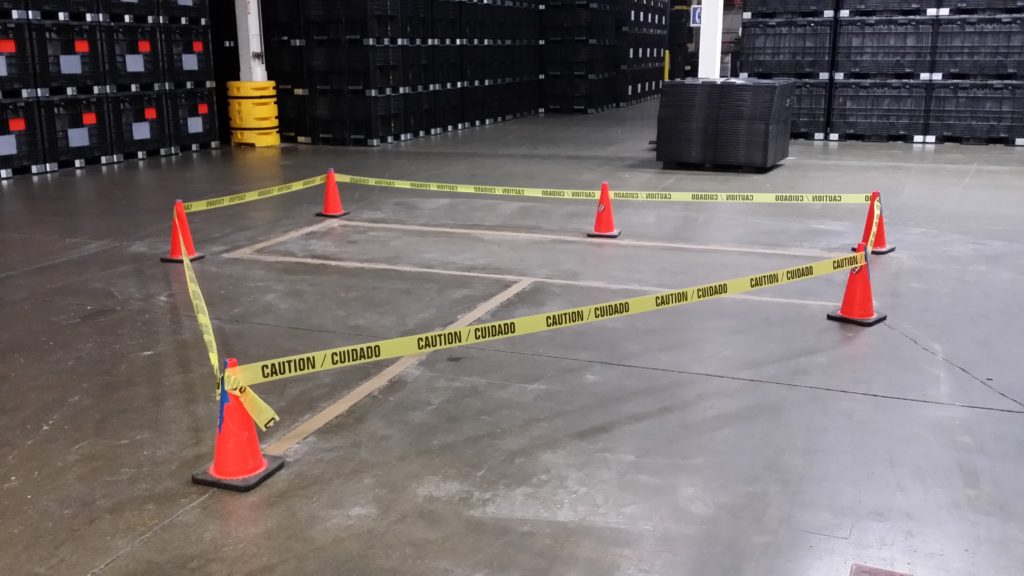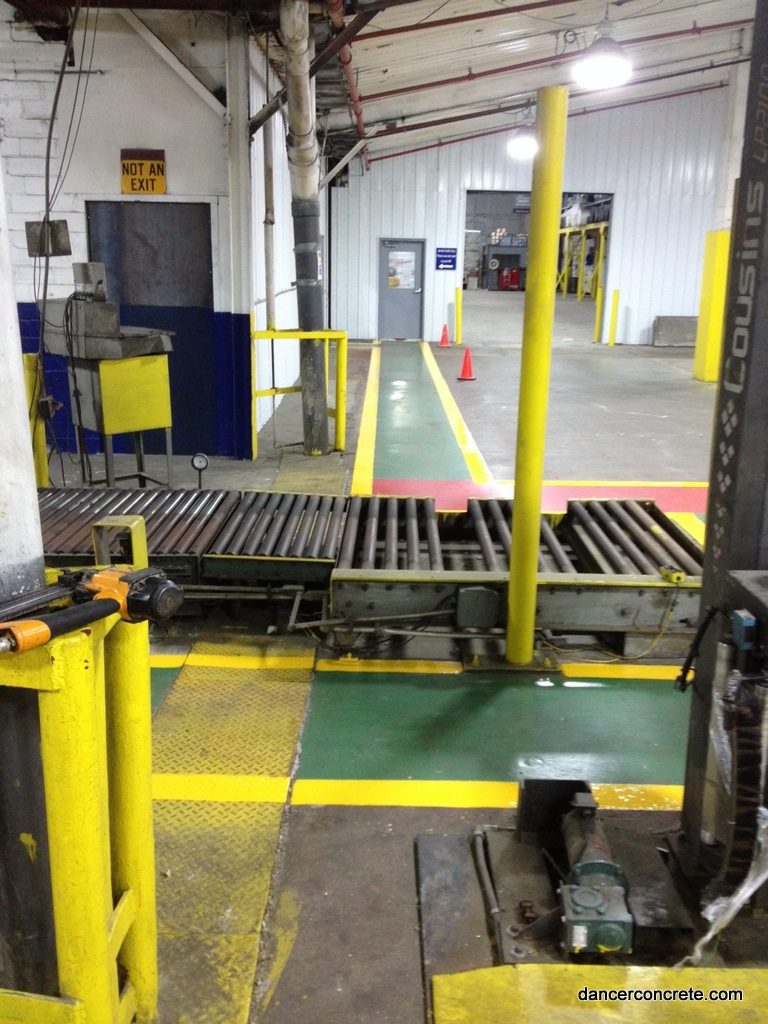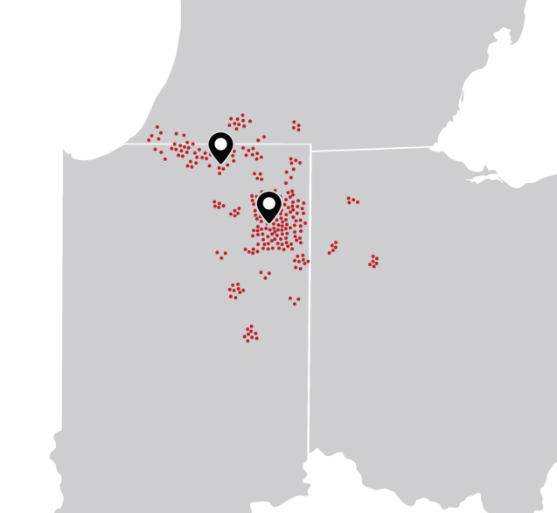No one wants to spend a lot of time thinking about their own floors, even flooring contractors. We want to have a level surface, that’s easy to clean and maintain, has solid joints, and no trip hazards. Moving from room to room should be easy—whether you’re walking, running, pushing, pulling, or riding. This isn’t always the case; basic use can wear and tear a concrete floor. Eventually, small areas of use can become large cracks or uneven surfaces, creating safety risks and financial liabilities. Industrial repairs for the issues are a cost-effective way to solve these problems, either when they are first noticed or after they’ve been a big issue for a bit.
REPAIRS
Concrete floors can crack. They can stop being level. The control joints can get in rough shape. Some of this is from hard use; some of it is from time. All of it can be repaired. The earlier an issue is caught, the easier, quicker, and more affordable it is to fix.
Additionally, floors that are in rough shape can create additional costs. Rough patches can wear through wheels on forklifts and machines, leading to more frequent replacements. In some cases, the wear on the floor could lead to the vehicles needing to be fully repaired or replaced.
CONSISTENT. At Dancer Concrete Design, we’ve chosen to just do concrete floors so we can do them right. Repairing and fixing concrete floors that are worn and a bit broken is what we do.
Patching + Leveling

Floors that aren’t level can cause a range of issues for people and machines. They can lead to larger, more costly problems in the future as they wear wheels and tires unevenly. Areas that need to be patched can cause the same issues as floors that aren’t level. Also, these issues can be eyesore.
Each floor is different. How we repair the floor depends on how big the damage is, what’s caused the damage, how the area is used, and other key factors.
Joint Repair

Joints are a normal part of a concrete floor. They are usually installed on a wet slab to help control where normal cracking happens as the slab cures. Normal use can wear and degrade joints, causing additional cracks and separation. This damage can become a saftey issue, for people tripping and for vehicles getting caught.
CONCERNS
Your floor is one of the largest things in your facility. Getting work done to your floor can require handing over a significant amount of space. This can lead to unplanned downtime and costs. However, not investing in industrial repairs can end up costing a lot more.
Down Time

Sometimes, slowing down or turning off production isn’t possible. Repairs can be pushed aside until there’s a good time to slow things. Except this can make a small repair turn into a large repair, or worse, turn into a repair that forces a production halt. Even if the damage doesn’t get worse, it can still create a lack of productivity as people have to work around it.
We want to get in and fix the concrete floor as soon as you notice there’s an issue. We work with your current schedule and production needs to get the floor repaired with minimal disruptions. Night and weekend options are available if that’s what will work best.
Cost
How much something will be is always a concern. We work with our clients to find the best solutions for their space—one that is durable and affordable.
INTERESTED?
Have a floor that isn’t level? A crack that keeps catching your forklift wheels? Get in touch with one of our Project Leaders today. They’ll work with you to come up with a solid plan to deal with it.

